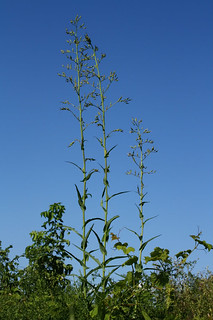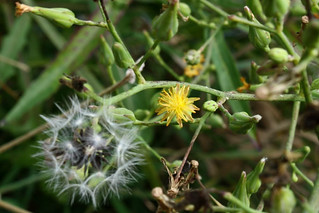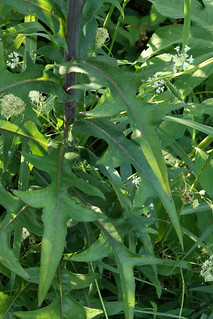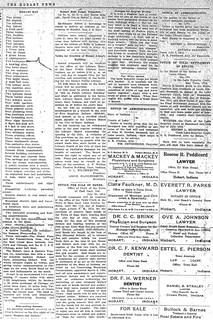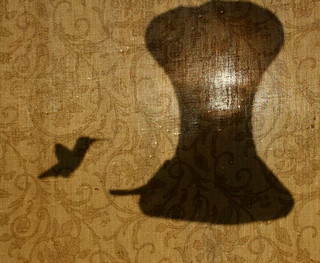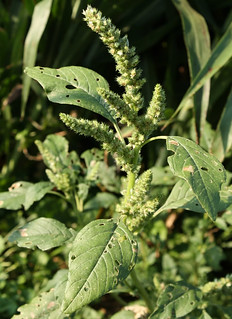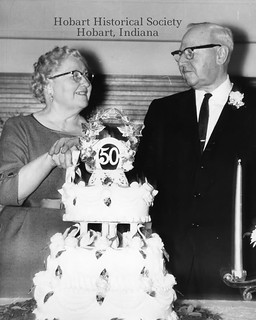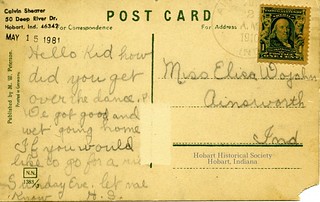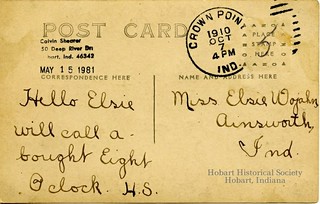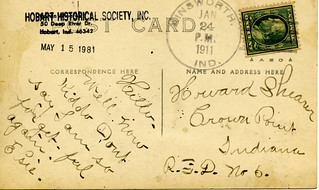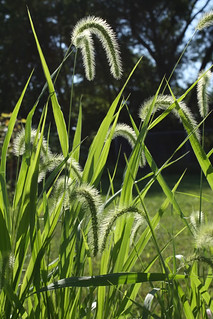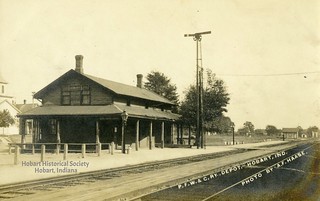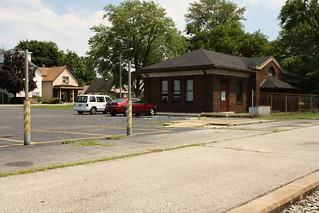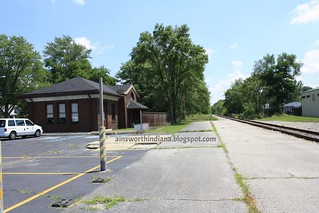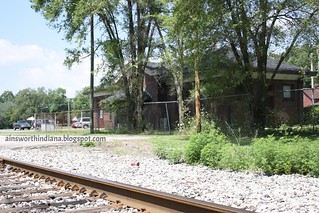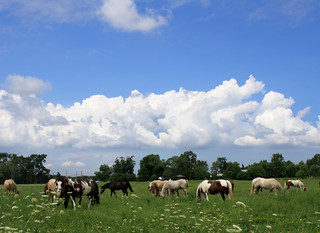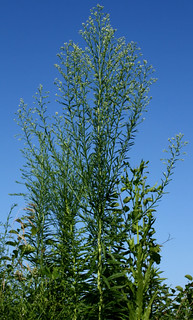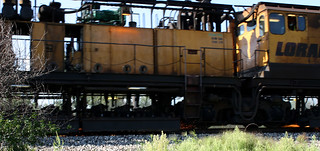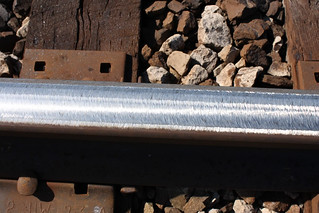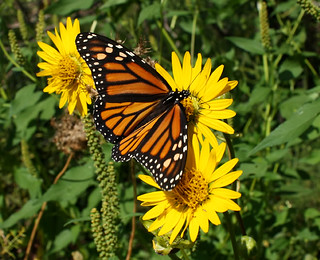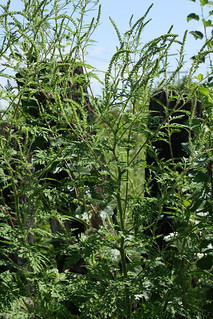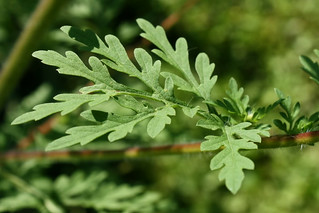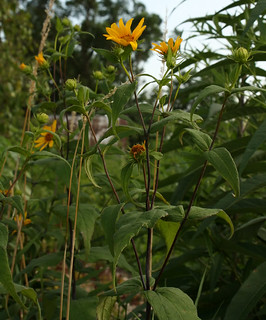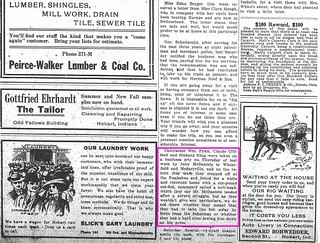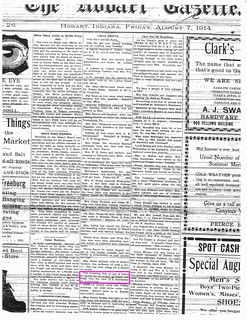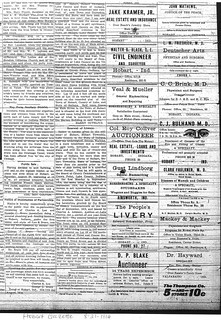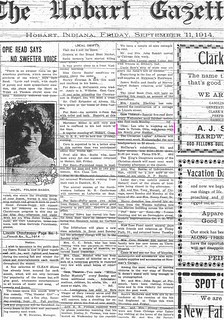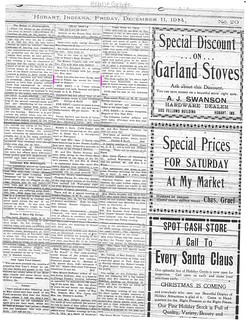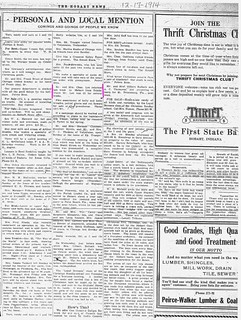Speaking of John Fiester (yes, we were, if only
incidentally), in 1914 he developed a very weak Ainsworth connection. And now I know a little more of the subsequent history of
Ed and Augusta Sauter, who had been so busy in turn-of-the-century Ainsworth.
I hadn't heard much from either of them since they left Ainsworth. In April 1908, Ed was reportedly planning to start up a blacksmith shop in Indiana Harbor, while Augusta remained in Hobart with the two of their children who were still at home. Within a couple of years, Ed had moved to Chicago. By 1913, Augusta, still in Hobart, was operating a boardinghouse.
It didn't come as a surprise when the
Hobart News announced that Augusta had been granted a divorce from Ed in late September 1914. What did surprise me was that two months after the divorce, Augusta married John Fiester — or, no, it wasn't the marriage that surprised me so much as the apparent lack of social stigma attached to her status as a divorcée. The
News, in an article on its front page, described the newlywed Mr. and Mrs. John Fiester as "among the most highly respected citizens of our community." The
Gazette said they were "popular and well known citizens of this community and … receiving the congratulations of their many friends." After their quiet marriage in Crown Point, they came back to Hobart for a wedding supper at the home of L.E. Barnes, the Hobart Township trustee.
On the other hand, we can't know what private snubs may have gone on, and what ill-natured gossip.
And I don't know what Ed thought about all this, either. He seems to have returned to live in Hobart for a while, or else he was visiting quite often, since he remained active with the Hobart Freemasons.
♦ ♦ ♦I've already told some of the history of the Sauters' two daughters,
Clara and Lizzie. Now I should speak of their older son, George, who around this time began to make his mark in Hobart.
George had been clerking for several years in the grocery department of the Wm. Stommel & Co. store in Hobart. In the summer of 1913, at the age of 22, he decided to go into business with Armen Meckeldey, who had been working in the Carstensen meat market. The partnership of Sauter & Meckeldey bought the grocery store of A.C. Thompson & Son, intending to operate henceforward as a combination grocery store and meat market. "Both young men possess commendable reputations in the community," said the
Gazette.
(Fred Thompson — the "Son" of A.C. Thompson & Son — announced after the purchase that he now intended to take his first vacation in 18 years.)
I don't know how long the partnership with Meckeldey lasted; I believe that by 1919 or so George was operating a grocery store solo. Here is a photo of the interior of that store, circa 1920 (George is on the left):
 (Click on image to enlarge)
(Click on image to enlarge)
Image courtesy of the Hobart Historical Society.
I like this photo because you can see the photographer's reflection in the mirrored door at the back of the shop.George Sauter's grocery was at 413 Main Street, and I believe the building it occupied is still standing:
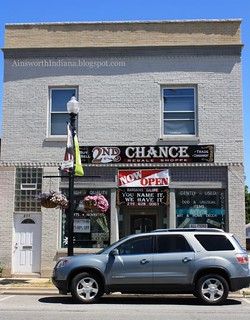
As for the younger Sauter boy, Edward, in 1910 (age 17) he was still at home, supplementing the family income by clerking at an ice cream parlor. Within a few years he had landed a job in the electrical department at a Gary steel mill. In May 1915 he abandoned that job to go to Detroit with a couple of other young Hobart men, seeking work at the Chalmers auto factory. After little more than a month "Eddie" returned, saying he preferred Indiana to Michigan. He got his old job back.
Sources:
♦ 1910 Census.
♦ "Fiester-Sauter." Hobart News 3 Dec. 1914.
♦ "Local Drifts." Hobart Gazette 17 Apr. 1908; 4 Dec. 1914.
♦ "New Grocery Firm." Hobart Gazette 1 Aug. 1913.
♦ "Personal and Local Mention." Hobart News 12 June 1913; 1 Oct. 1914; 29 Apr. 1915; 20 May 1915; 1 July 1915.
